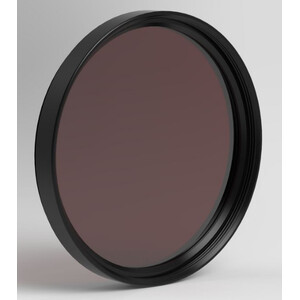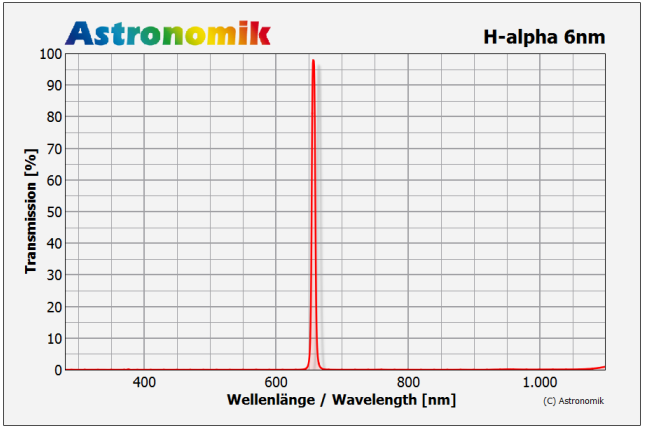Product series:
The filters in the H-alpha 6nm series are suitable for photographing hydrogen nebulae. The contrast between objects that emit H-alpha light and the background sky is greatly enhanced.
The full width at half maximum of 6 nanometres is perfectly suitable for use with cameras with particularly low dark current.
6nm filters are the best choice if you are observing from a location with extreme light pollution or photographing faint objects in regions of the sky with many stars.

Astronomik
Filters H-alpha 6nm Clip Pentax K
$ 570.00

Astronomik
Filters H-alpha 6nm CCD Clip Nikon XL
$ 570.00

Astronomik
Filters H-alpha 6nm CCD M52
$ 570.00

Astronomik
Filters H-alpha 6nm CCD M49
$ 570.00

Astronomik
Filters H-alpha 6nm CCD 42mm, unmounted
$ 408.00
Transmission curve

What does CCD mean?
CCD filters also feature an integrated IR block. This is particularly important for photography, since although the camera sensors are sensitive to this long-wave spectral range, the upstream optical instruments (telescopes etc.) cause imaging errors in the infrared range.
Such optical errors do not play a role in purely visual observation, since the human eye anyway cannot perceive them. Of course, if you specifically want to shoot in the IR spectrum, you should not use a CCD filter.
